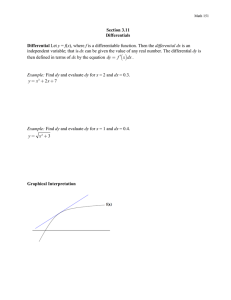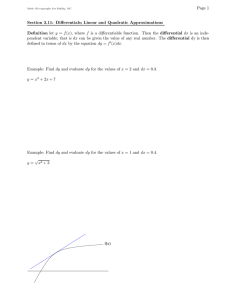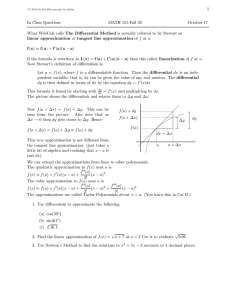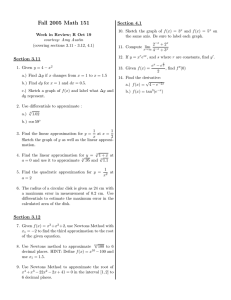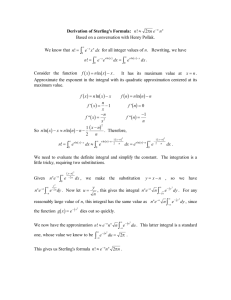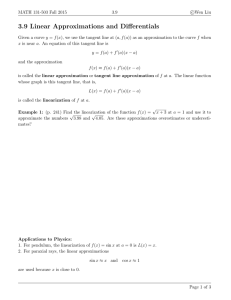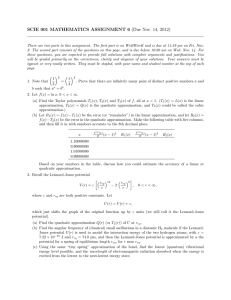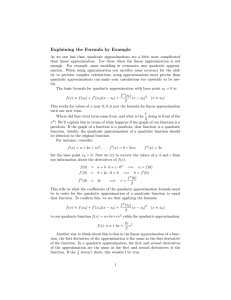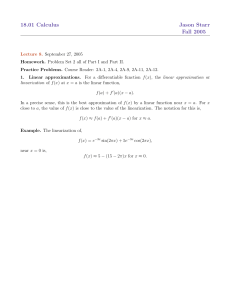Section 3.11 Differentials; linear and quadratic approximations
advertisement
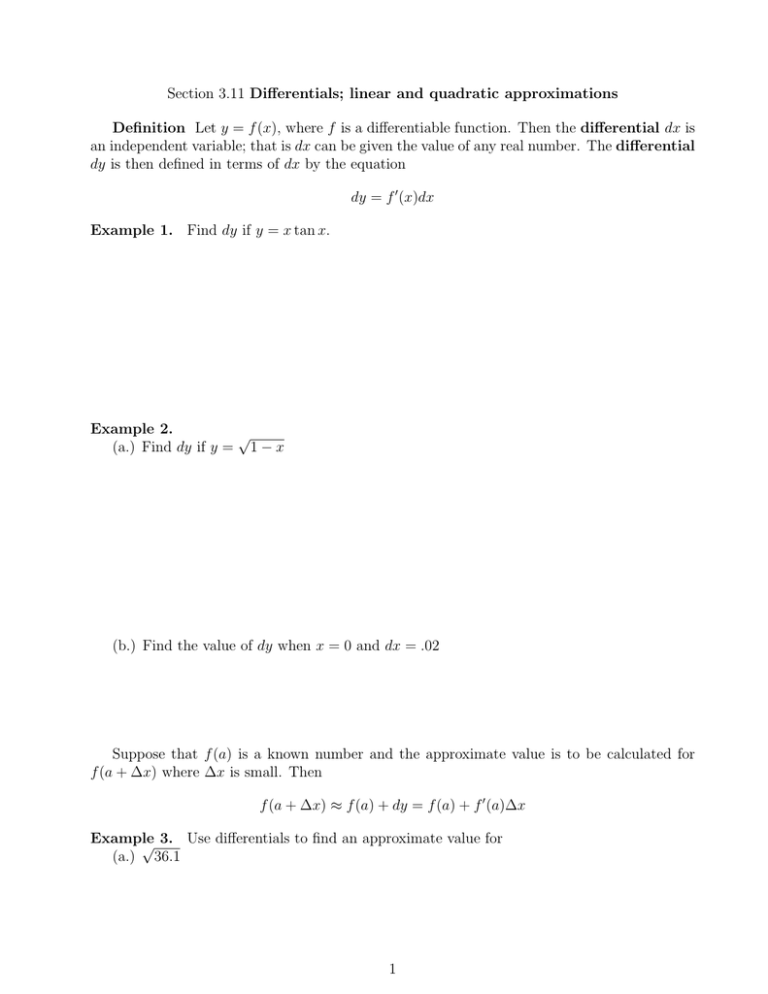
Section 3.11 Differentials; linear and quadratic approximations Definition Let y = f (x), where f is a differentiable function. Then the differential dx is an independent variable; that is dx can be given the value of any real number. The differential dy is then defined in terms of dx by the equation dy = f 0 (x)dx Example 1. Find dy if y = x tan x. Example 2. √ (a.) Find dy if y = 1 − x (b.) Find the value of dy when x = 0 and dx = .02 Suppose that f (a) is a known number and the approximate value is to be calculated for f (a + ∆x) where ∆x is small. Then f (a + ∆x) ≈ f (a) + dy = f (a) + f 0 (a)∆x Example √ 3. Use differentials to find an approximate value for (a.) 36.1 1 (b.) sin 590 Linear approximations. The approximation f (x) ≈ f (a) + f 0 (a)(x − a) is called the linear approximation or tangent line approximation of f at a, and the function L(x) = f (a) + f 0 (a)(x − a) is called the linearization of f at a. Example 4. Find the linearization L(x) of the function f (x) = √ Example linear approximation at a = 0 √ 5. Verify the 1 (a.) 1 + x ≈ 1 + 2 x 2 1 at a = 0 2+x (b.) sin x ≈ x Example 6. Find the linear approximation √ √ of the function f (x) = it to approximate the numbers 0.9 and 0.99. √ 1 − x at a = 0 and use Quadratic approximations Let’s approximate curve y = f (x) by a parabola y = P (x) near x = a. To make sure that the approximation is a good one, we stipulate the following: P (a) = f (a) P 0 (a) = f 0 (a) P 00 (a) = f 00 (a) Example 7. Find the quadratic approximation for the function f (x) = cos x near x = 0. 3 The quadratic approximation of f near a is f 00 (a) (x − a)2 2 √ Example 8. Find the quadratic approximation to f (x) = 3 x near a = −8. f (x) ≈ f (a) + f 0 (a)(x − a) + 4
